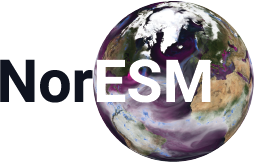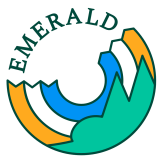The NorESM Land Sites Platform
- Scientific paper DOI: https://doi.org/10.1111/gcb.16808
- Code DOI: https://doi.org/10.5281/zenodo.7304386
The NorESM Land Sites Platform (LSP for short) aims to facilitate site-level simulations over land using NorESM and its land component CTSM with the developing vegetation demographic module FATES.
The platform aims to lower the technical barriers to vegetation demographic modelling with NorESM-CLM-FATES. In doing so, we aim to help bridge the gaps between observations and modelling, promote the usage of site-level observations to test, validate and improve the models and its land component, and to promote the usage of NorESM-CLM-FATES to new audiences and research settings.
The observation sites currently included in the platform are described in the Sites page.
Development team
- Kaveh Karimi
- Lasse Torben Keetz
- Eva Lieungh
- Hui Tang
- Emiliano Gelati
- Stefanie Falk
- Sunniva Indrehus
- Anne Fouilloux
- Yeliz Yilmaz
- Elin Aas
- Peter Horvath
- Kjetil Aas
- Devaraju Narayanappa
- Sonya Geange
- Inge Althuizen
- Anders Bryn
- Hanna Lee
- Frans-Jan Parmentier
- Norbert Pirk
- Vigdis Vandvik
- Ane Vollsnes
- Olav Skarpaas
- Frode Stordal
- Lena M. Tallaksen
Supporting projects
Acknowledgements
The NorESM-LSP has evolved over several years from the needs and visions of a large group of researchers and students connected through the EMERALD and LATICE projects. Funding has come from the projects listed above. Thanks are due to everyone who participated along the way in discussions, feedback, and testing of early versions. The NorESM-LSP software wraps around the NorESM-CLM-FATES model framework. The Norwegian Earth System Model is developed by a consortium, and is closely related to the Community Earth System Model (CESM). The CESM and Community Land Model (CLM) are supported primarily by the U.S. National Science Foundation. The FATES model is supported primarily by the U.S. Department of Energy’s Next Generation Ecosystem Experiment - Tropics (NGEE-T) project.
How to cite
If you publish something based on simulations through the LSP, please cite the software in your publication. You can use this citation for the peer-reviewed paper describing the LSP as Keetz & Lieungh et al. (2023):
- Keetz, L. T., Lieungh, E., Karimi-Asli, K., Geange, S. R., Gelati, E., Tang, H., Yilmaz, Y. A., Aas, K. S., Althuizen, I. H. J., Bryn, A., Falk, S., Fisher, R., Fouilloux, A., Horvath, P., Indrehus, S., Lee, H., Lombardozzi, D., Parmentier, F.-J., Pirk, N. … Tallaksen, L. M. (2023). Climate–ecosystem modelling made easy: The Land Sites Platform. Global Change Biology, 00, 1– 13. https://doi.org/10.1111/gcb.16808
The webpage with technical documentation can be cited as: The NorESM-LSP development team. 2022, [month day]. NorESM Land Sites Platform technical documentation. https://noresmhub.github.io/noresm-land-sites-platform/. Each individual repository has Zenodo records with DOIs and citation instructions, in case you need to refer to them separately.
NB! The NorESM-LSP software wraps around the model framework. When you publish model experiments, you also need to properly cite and acknowledge the models: See the licences of NorESM, CLM, FATES. In the Acknowledgements section, it is common practice to add the main funding information of the models that you use (e.g. the U.S. National Science Foundation for CLM, NGEE-Tropics for FATES). The main publications for each model should also be cited in the main text.
NB! If you use observational data, e.g. from the Vestland Climate Grid sites or another integrated site, make sure to look at the licences, rights and conditions attached to those data as well! Following international standards for research ethics, authorship invitations should be given based on 'substantial contributions to conception and design, acquisition of data, or analysis and interpretation of data', among other things.
See for instance the ICMJE authorship guidelines (Vancouver convention) to help you decide which kind of acknowledgement is appropriate. Similarly, if an LSP developer helped you substantially, please consider adding that person to the Acknowledgements section of your publication or invite them to co-author your publication if the contribution is substantial enough.
Contact
For questions about the platform, please open an issue on GitHub or get in touch with one of the developers directly.


